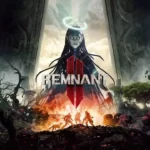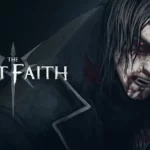In the world of fantasy adventures, the recent addition ‘Testament The Order of High Human‘ aims to feel familiar but falls short. It’s like meeting an unsure guest at a wedding who goes on stage and gives a confusing speech. This fantasy journey struggles because it’s not well-executed and has confusing ideas. It’s like explaining a complex video game to someone new and asking them to recreate it from memory. The story is complicated and relies on overused ideas, making the fighting system dull and frustrating. Sadly, the game has many bugs that make the problems worse. These issues would be okay in a shorter adventure, but in a 40-hour game, they make it tough and tiring.
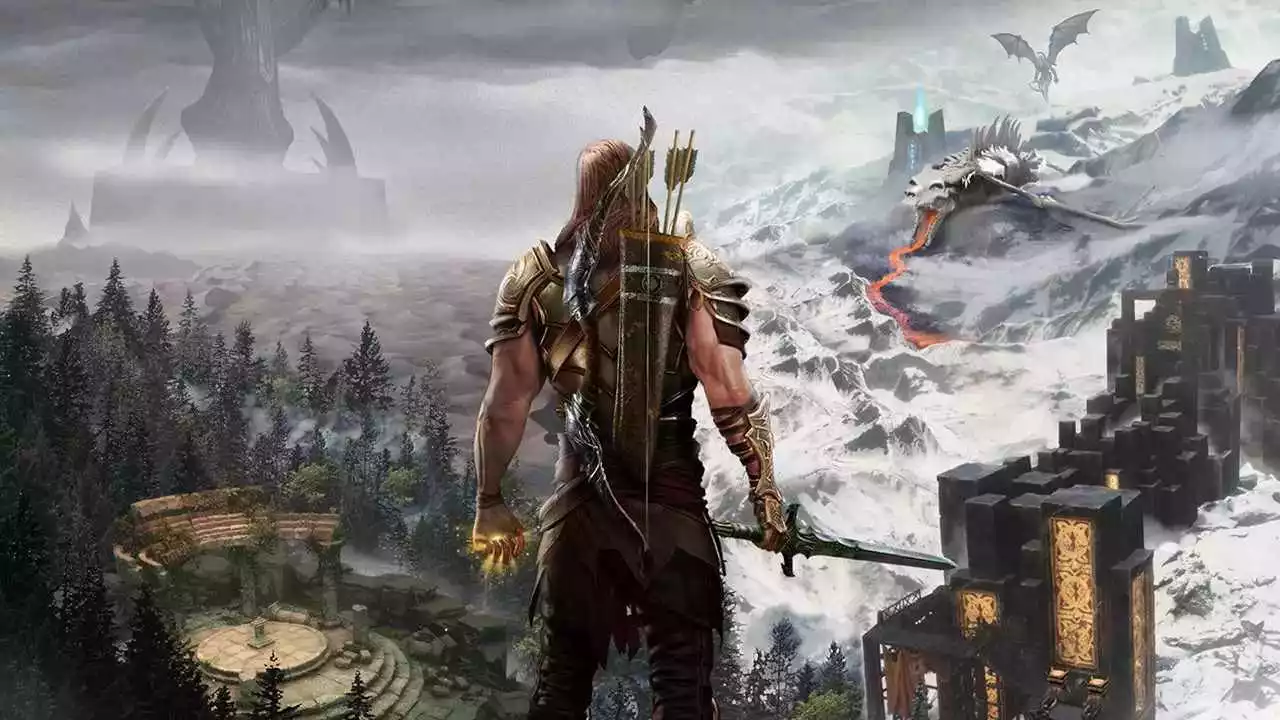
Unveiling Testament: Navigating Clichés and Missed Opportunities in an Epic Quest
Step into the world of the Testament, where missed opportunities abound right from the start. The stage is set in Tessara, a fantasy realm that might feel all too familiar with its halflings, dragons, and wielders of fire. Your role is that of Aran, an immortal god-king whose vibrancy seems oddly absent. Enter Aran’s devious brother, a greasy antagonist afflicted by the unmistakable symptoms of a villain – a swirling purple energy consuming him, yet strangely oblivious to his own malevolence.
Remarkably, the narrative unfolds with Aran already dethroned and betrayed, scant effort made to catch you up on the backstory. This leaves any potential stakes by the wayside, unlike tales that smartly lay the groundwork through prefaces or introductory scenes. A dose of weirdness comes along with this absence, leaving you yearning for an intriguing twist to justify the abrupt entry into monster-slaying mayhem. Regrettably, such hopes are dashed; no twist materializes.
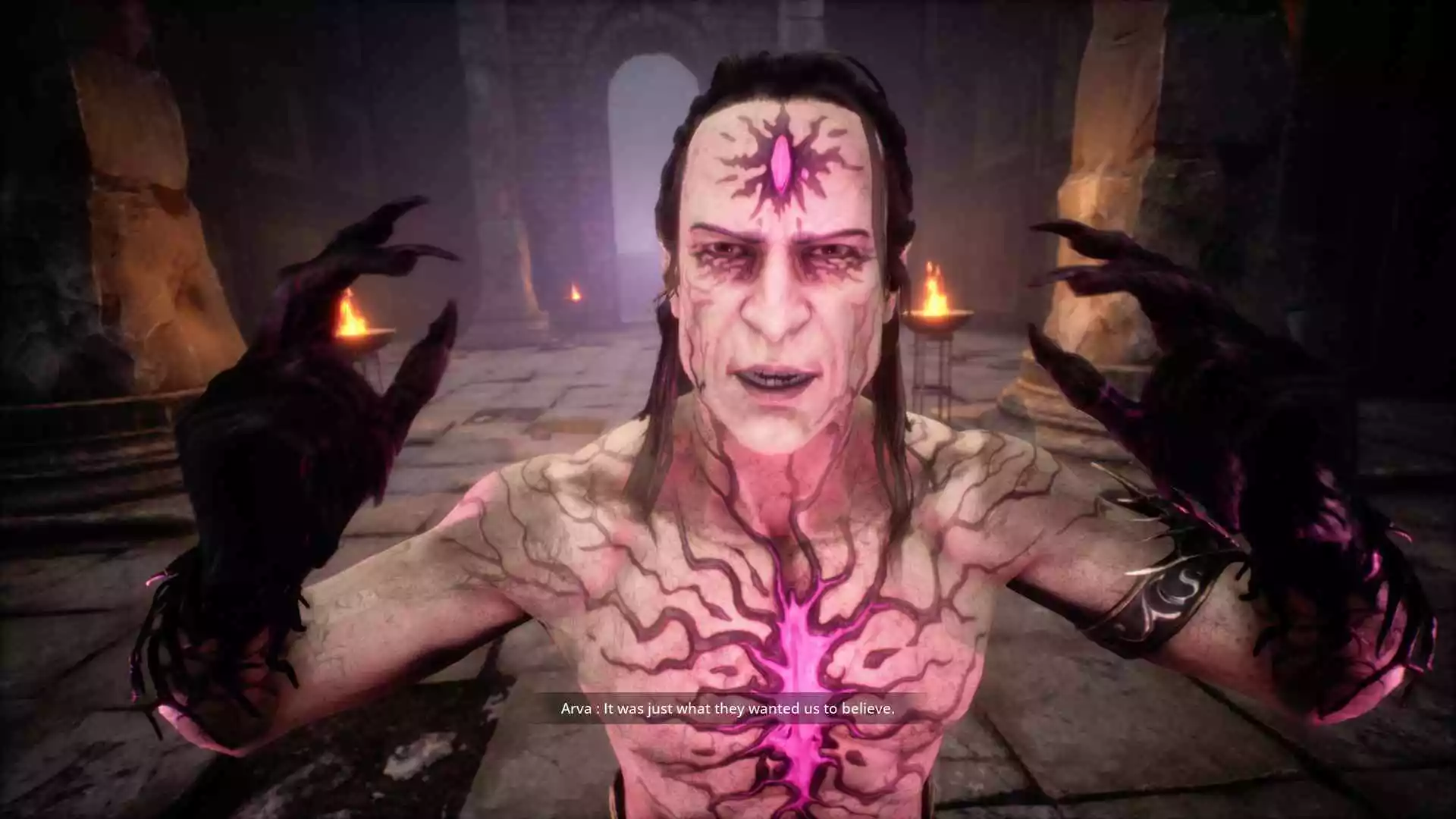
What follows is a paint-by-numbers vengeance expedition. Your mission: regain strength and topple those who double-crossed you. The narrative void at the start remains, a lack of background before plunging into a monster-slaying spree. Yet, a saving grace would’ve been these monsters offering an engaging combat experience.
As you navigate Tessara’s landscapes, you’re subjected to a plethora of dialogues soaked in the clichés of Light, Darkness, and Truth – trite phrases that beg for a skip button, which sadly isn’t an option. Testament’s story fills numerous checkmarks: an abundance of characters, historical depth, and intricate lore interwoven throughout the expansive campaign. However, this becomes a disillusioning tapestry of clichés, lacking the slightest trace of substance.
Prepare yourself for torrents of high-fantasy jargon that bear no relevance to the on-screen events. These are swiftly succeeded by extended monologues, often repetitive, with no destination in sight. The outcome is a narrative that raises anticipation only to let it fizzle out.
In a world teeming with potential, Testament’s initial missteps leave an echo. Tessara’s landscape, Aran’s predicament, and the narrative’s ambitions hold promise, yet the execution falters. Let’s hope that the journey ahead offers redemption, turning clichés into captivating stories that truly resonate.
Trials of the Divine: Inconsistent Storytelling and Frustrating Combat in Testament The Order of High Human
The predicament intensifies when the protagonist, an all-knowing god in the world of Tessara, contrasts starkly with your own unfamiliarity as the player. The character tries to bridge this chasm by incessantly engaging in self-dialogue, sharing insights into ancient events that undoubtedly surpass the mundane revenge-driven narrative at hand. This boils down to a distressing case of “telling not showing,” a literary pitfall that becomes glaringly pronounced. Countless times, Aran’s soliloquies unravel obscure backstories of characters and civilizations, almost always disconnected from the ongoing quest for vengeance.
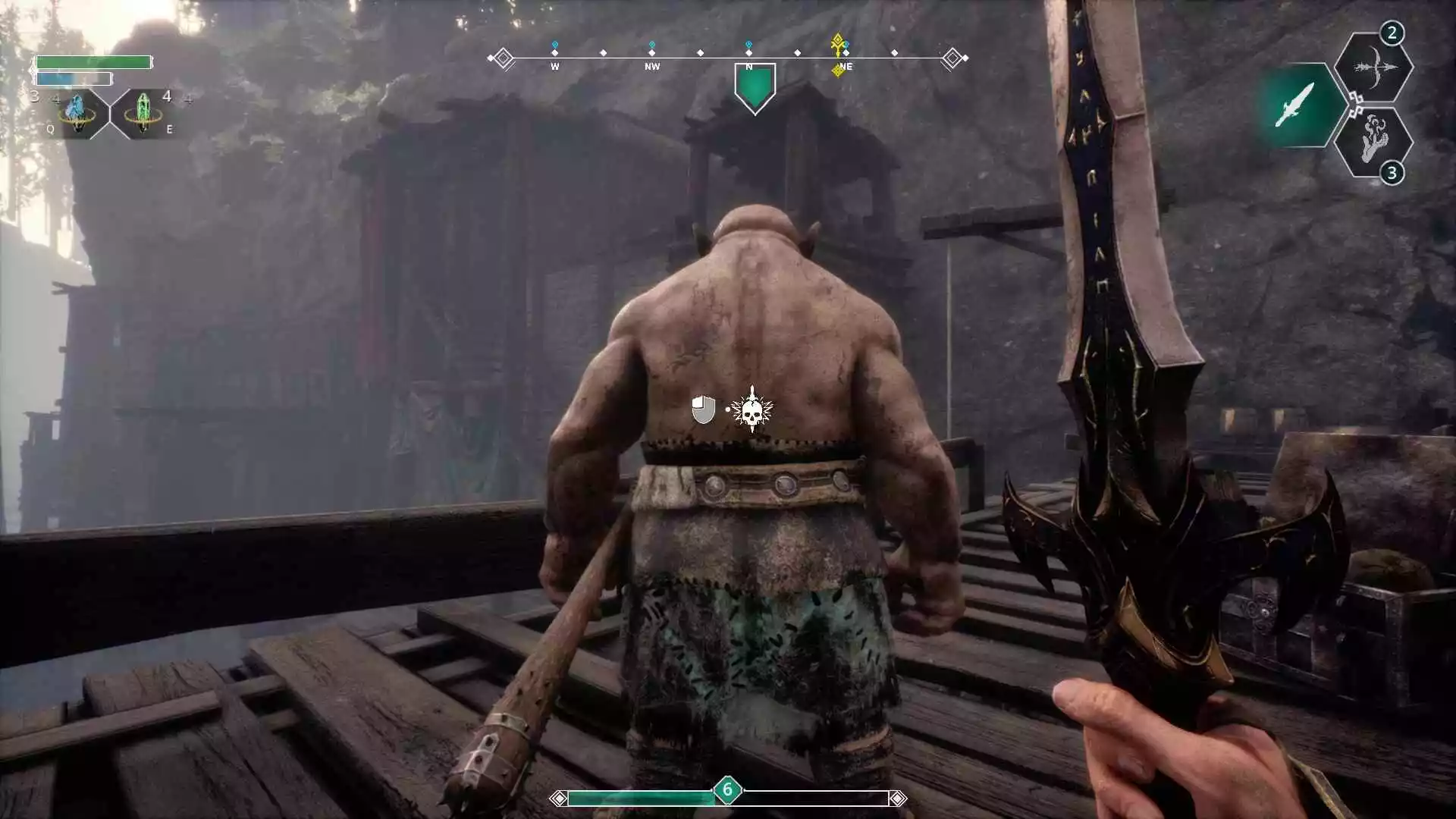
Adding to the woes, characters within the story lack charisma and presence. Aran’s voice, reminiscent of the enigmatic Tommy Wiseau from “The Room,” oscillates between emotionless deliveries and tone so eccentric it feels like parody. However, a deadpan joke loses its charm after relentless repetition. Periodically, the antagonist saunters out of a portal for a cringe-worthy monologue, evoking neither fear nor aversion.
While the narrative might irk you along the journey, it’s the combat in Testament The Order of High Human that truly becomes a painful spectacle. Armed with sword, bow, and magic, you’re thrust into battles against waves of adversaries at frequent intervals, navigating through encounters marred by exasperating design choices. Save for a handful of tweaks that exacerbate the ordeal, each skirmish echoes the last – a few enemy archetypes converging in confined arenas, all targeting you at once. Amidst the chaos, you dart around, striving to eliminate foes during brief respites from evading lethal projectiles and relentless assailants.
ALSO READ: Arcadian Atlas Review – A Captivating SRPG Adventure with Love, War, and Unique Combat Systems
The tumultuous battlefield sporadically poses a genuine test, yet primarily it examines your patience. Evading and dodging become your default stance, far outweighing offensive actions. This monotonous dance between survival and offense often ends up frustrating rather than engaging, amplifying the tedium.
In the realm of Testament, the story struggles to captivate, grappling with the weight of its own ambitions while characters falter in leaving an impact. Combat, the heart of the gameplay, emerges as a source of agony due to its repetitive nature and questionable design choices. As you delve deeper into this world, the hope for redemption remains, a beacon for the narrative to transcend its missteps and the gameplay to evolve beyond its vexing limitations.
Combat Chaos: Unraveling the Frustrations of Melee, Archery, and Magic in Testament
The melee combat dance in Testament is a monotonous affair – an unending cycle of repeated attack combos interspersed with frequent dodges to evade incoming strikes. While you do unlock a smattering of abilities as you progress, the arsenal remains limited. These include maneuvers like shoving enemies away or infusing your blade with elemental fury – fire or lightning – provided you complete your combo without interruption. Unfortunately, the options stay confined within a disappointingly restricted scope. Tactics like blocking, parrying, counterattacks, or timing-based finesse find no foothold; the strategy is reduced to a mindless button-mashing spree, centered on out-hitting rather than outwitting your foes. This unfulfilling approach greets you at the outset and lingers as your journey progresses, failing to mature into a more satisfying system.

In your arsenal lies a bow, which gains prominence as airborne and inaccessible enemies come into play. However, Testament’s archery mechanics lack novelty or allure. Progress yields modest enhancements like explosive arrowheads and projectiles that ricochet or pierce through environments. Tragically, you’re often thrust into constricted arenas with a paltry supply of arrows and an overwhelming horde of adversaries, disrupting any prospect of steady aim. The vexation deepens as getting struck mid-shot resets your rhythm, steering you back to the familiar routine of swinging your sword.
Spells occupy the final facet of your abilities, with no groundbreaking surprises. Fireballs, self-healing, and area-effect stunning via electricity characterize the repertoire. Advanced spells with prolonged casting times surface later, yet the trade-off rarely seems worthwhile, especially given the constant barrage of attacks that frequently disrupt your incantations.
Initial combat disappointment gradually transforms into an ordeal as you delve further into Testament’s realm. Amidst this evolution lies a colossal pitfall – the emergence of shielded enemies. Shielded foes boast imperviousness thanks to ethereal eyeball sentinels hovering over them, hidden from plain view. To confront these infuriating adversaries, you must activate an insight mode akin to detective vision, focusing on the eye to unveil it. Subsequently, you revert to regular vision mode and employ your bow to eliminate the ocular obstacle. This convoluted process transpires amidst the chaos of a dozen or more foes, many of whom sport similar barriers and concealed ocular defenders. Consequently, the combat’s already disordered pace and bedlam plummet from bad to outright enraging.
ALSO READ: Remnant 2 Review – A Procedural Co-op Looter Shooter Adventure
As the chaos of combat unfurls, Testament’s mechanics unravel their frustrating intricacies. The melee monotony, archery’s unoriginality, and spellcasting’s lack of surprise culminate in a discordant symphony of annoyance. With every level conquered, the fervent hope remains for a redemptive shift in dynamics, where battles transmute from frustrating engagement to captivating conquest.
Drowning in Frustration: Confronting Eyeball Shields and Darkness Zones in Testament
Prepare yourself, for the torment reaches new heights with the introduction of “darkness zones” – an excruciating ordeal that outshines even the maddening eyeball shields. These relentless encounters cloak the sky in shadow, summoning an even larger floating eyeball overhead. Your pain amplifies as you begin to steadily lose health and mana amidst the ongoing onslaught of enemies. The remedy? A frantic scramble in investigation mode, hunting down three smaller eyeballs that must be unveiled and subsequently eliminated. Only then can you address the colossal eyeball, quelling the draining influence of the darkness zone. But that’s not all – the shield-granting ocular apparitions lingering above adversaries must also be dealt with, demanding an intricate dance to survive.
Words fail to convey the sheer exhaustion of repeating this process even a few times. When stretched across a staggering 40 hours of gameplay, the experience borders on traumatizing. Testament significantly overstays its welcome, dragging on at least five times longer than necessary. An excessive chunk of this runtime fixates solely on combat, a pacing that cannot be sustained. Worth noting, this isn’t an open-world escapade – barring a few optional side quests, the game ushers you through a linear sequence of combat sequences, allowing little agency. Every battle’s culmination is met with a weary sigh, as the realization dawns that more taxing encounters lie just moments away.
Boss battles punctuate this tiring journey. If fortune favors you, you’ll discover a fondness for these substantial adversaries – more so than I did. An array of headless knights in varying hues, stone golems that conform precisely to your expectations, and a witch boss who predominantly summons waves of minions, avoiding direct confrontation. Save for a couple of boss encounters that deviate from the norm, you’ll engage the same lineup repeatedly. The witch and her horde, in particular, become recurrent adversaries, plaguing you thrice within a mere hour. This repetition serves as a stark reminder of Testament’s dearth of innovation, artfully compounded by excessive padding.
The struggle transforms into a wearisome saga, as eyeball shields and darkness zones redefine frustration. What could have been moments of captivating gameplay spiral into draining ordeals, leaving you yearning for respite from the repetitive torment. Amidst the turmoil, the fervent wish persists – that the game may find its footing, trading exhaustion for engagement and rekindling the spark of excitement.
Quest for Redemption: An Odyssey Through Tedious Challenges in Testament
If you, like me, harbor the naive expectation that the real intrigue of Testament hides within optional confrontations or engaging content, you’ll be in for a disheartening revelation. The optional boss battles that promise exciting encounters or rewarding spell unlocks reveal themselves as little more than reiterations. These identical foes sport different hues but mimic one another’s movesets with uncanny resemblance. Side quests offer no respite either, culminating in quests that involve scavenging for trinkets sans the luxury of a map, only to gain meager rewards. I embarked on a completionist quest, scouring every nook and cranny for hidden gems, only to be met with redundant boss fights to secure spells that remained impractical amid the chaotic combat milieu.
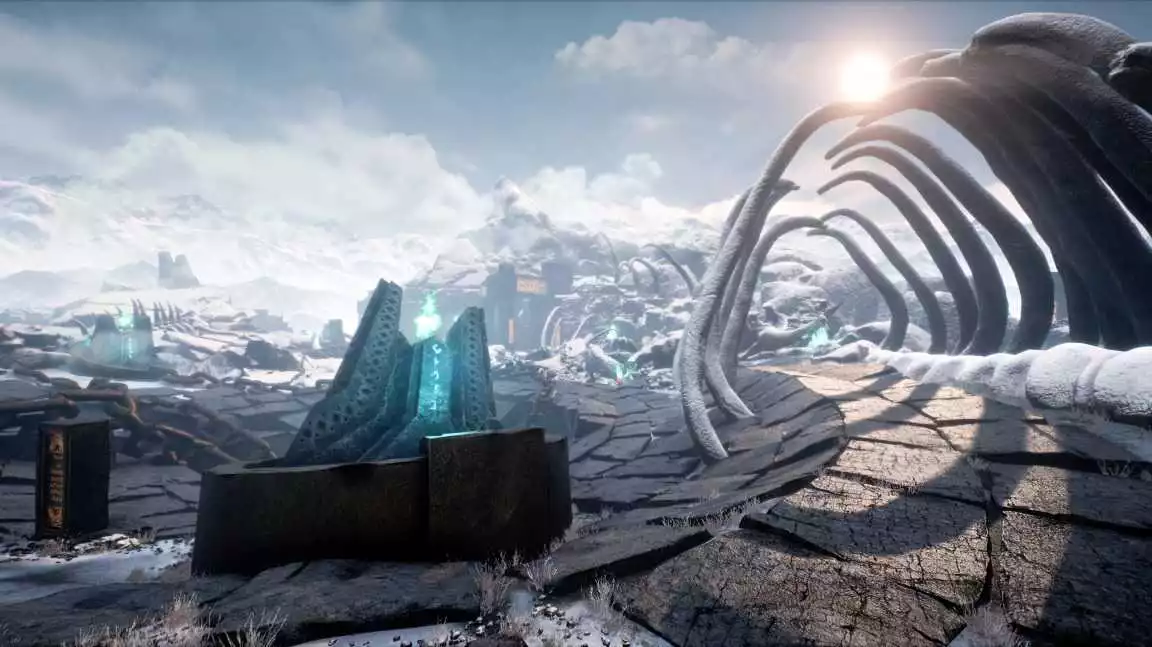
Fortunately, the oppressive rhythm of combat is occasionally punctuated by interludes of extended platforming and puzzle-solving – some of Testament’s brighter facets. Navigating grand temples, swinging from ropes, and unraveling basic switch and maze puzzles might not exude excitement or require profound cogitation, yet after enduring an onslaught of dreadful combat, these moments are a breath of fresh air. Additionally, there are light-reflecting puzzles that, while reminiscent of countless other games, are astutely designed, offering a refreshing deviation from the norm.
ALSO READ: Oxenfree 2 Lost Signals Review – A Captivating Journey into Supernatural Mysteries
The game’s general design and narrative shortcomings aside, a barrage of bugs and performance woes further exacerbate the disheartening experience. A medley of framerate inconsistencies, crashes, and even glimpses of developer artifacts you weren’t meant to see. Instances of getting stuck in the environment and quests locked until character demise or a checkpoint reload further stain the experience. In a finale that seems fitting for the cascade of misfortunes, I encountered five consecutive crashes during the last boss fight, culminating in an ending cutscene that played at an abysmal 10 frames per second on my RTX 4090. When crashes become a respite from gameplay, it signals a deeply flawed experience.
The pursuit of redemption proves an uphill struggle. What may have been intriguing optional encounters and puzzle diversions morph into mere shadows of their potential. As the tapestry of bugs, performance pitfalls, and narrative frustrations weaves, the craving for a turnaround intensifies. A yearning for the game to rise above its myriad issues, crafting moments of genuine engagement and accomplishment, becomes a beacon of hope amidst the turmoil.
Verdict
Testament The Order of High Human raises the age-old question: “What if ‘quantity over quality’ was transformed into a game?” The answer unfolds in the form of an excruciating, exasperating, and cringe-worthy fantasy adventure RPG. This tale extends laboriously, plagued by an insipid and perplexing narrative, and accentuates its terrible concepts to an abhorrent level through sheer volume alone. Coupled with an array of technical complications, the end product emerges as a tour de force of “Elder Scrolls, but make it painful,” leaving an indelible mark far beyond the countless hours endured.
The pursuit of substance succumbs to a relentless pursuit of quantity, resulting in a journey that overstays its welcome. The narrative’s mundane and perplexing trajectory coupled with abysmal combat mechanics creates a synergy of disappointment that eclipses the initial flaws. To compound these woes, an ensemble of technical glitches casts an even more ominous shadow over the experience. The amalgamation of these elements crystallizes Testament’s identity as an embodiment of “quantity over quality,” painting a bleak landscape of frustration that lingers long after the hours invested.
In the annals of gaming history, Testament The Order of High Human stands as a cautionary tale of how prioritizing quantity can render quality an afterthought, a stark reminder that no game can be saved by sheer volume alone. Read Latest Games News & Updates Click here.
Frequently Asked Questions (FAQs)
What is the focus of the article “Testament The Order of High Human – A Frustrating Journey Through Quantity Over Quality”?
The article focuses on providing an in-depth review and critique of the fantasy adventure RPG game “Testament The Order of High Human.” It discusses various aspects of the game, including its narrative, combat mechanics, technical issues, and overall quality.
How does the article describe the narrative of the game?
The article describes the game’s narrative as struggling due to poor execution and perplexing ideas. It compares the experience to meeting an uncertain guest at a wedding who gives a confusing speech. The narrative is criticized for relying on overused concepts and clichés, which diminish the overall storytelling quality.
What are the challenges faced by players in combat within the game?
The article highlights several challenges in the game’s combat system. It describes melee combat as monotonous and lacking in strategic depth, with a focus on repetitive attack combos and dodging. The archery mechanics are criticized for lacking novelty and effectiveness, particularly in constrained environments. Additionally, the spellcasting mechanics are noted to be lacking surprises and hindered by constant interruptions.
How does the article describe the overall gameplay experience?
The article conveys that the gameplay experience in “Testament” is frustrating and often repetitive. It particularly emphasizes the aggravation caused by the introduction of “darkness zones,” which drain health and mana while requiring players to navigate intricate challenges. The game’s combat sequences and encounters with shielded enemies are described as disordered and enraging.
What does the article suggest about the game’s potential for improvement?
The article suggests that the game has the potential for redemption despite its shortcomings. It expresses hope that the narrative will evolve beyond clichés, characters will become more engaging, and combat mechanics will undergo positive changes. The article also hints at the potential for engaging puzzle-solving moments within the game.
How does the article summarize its overall verdict on “Testament The Order of High Human”?
The article’s verdict is that the game embodies the concept of “quantity over quality,” resulting in a frustrating and disappointing experience. It characterizes the game as an example of prioritizing volume over well-crafted content. The article suggests that the game’s issues overshadow any potential redeeming qualities.
What is the general tone of the article?
The general tone of the article is critical and evaluative. It offers a comprehensive assessment of the game’s various aspects, highlighting both its shortcomings and potential for improvement. The tone is objective and seeks to provide readers with a clear understanding of the game’s strengths and weaknesses.
Is the article focused on technical aspects like mobile-friendliness and page loading speed?
While the article does not focus on technical aspects like mobile-friendliness and page loading speed, it does discuss technical issues within the game itself. These include bugs, crashes, and performance inconsistencies that impact the overall gameplay experience.
Does the article provide any recommendations for players interested in the game?
The article does not explicitly provide recommendations for players interested in the game. However, its comprehensive review can help potential players make informed decisions about whether the game aligns with their preferences and expectations.
Is there an optimistic view about the potential future of the game in the article?
Yes, the article holds an optimistic view about the potential future of the game. While it criticizes the current state of the game, it suggests that improvements could be made to various aspects, including narrative, combat, and technical issues. The article expresses hope for the game’s redemption and positive evolution.





